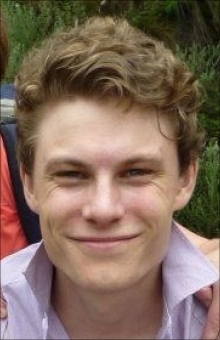It may be hard to imagine what it is like to spend over 2 months living at 5300m. Therefore, we thought it might be interesting to explain a bit about how we live on a testing day at Everest Base Camp...
Morning dawns clear and very cold. Before the sun hits your tent around 8.30am, temperatures hover icily around -10 Celsius; it is a brave investigator who leaves the warmth of their sleeping bag before it is absolutely necessary...
Doctor Ali Cobb, lab manager, gives an enthusiastic wake-up call at 7.45 along with a ‘fact of the day’, often contentious enough to rouse investigators on factual grounds alone!
As you wake, showers of frozen condensation drop from the tent wall to remind you of just how cold it still is, and how you should really stay in bed for at least another hour. Dressing is best done inside your bag, giving rise to bizarre contortions as each limb tries desperately to avoid the chill and further ‘tent avalanches’. As you emerge blinking into the sunlight, you first must check whether your tent remains where it was yesterday: overnight the glacier on which we live cracks, groans and shatters ominously, and with the changing seasons the melting ice reshapes our camp daily. Some investigators have it worse than others, James Horscroft’s tent, once safely perched on a snow bank, now teeters on the edge of an ever-growing lake!
Breakfast is usually a cheerful affair: those members feeling under-the-weather are checked-upon; those undergoing 24-hour studies grumble about a poor night's sleep, and the rest contend Ali’s ‘fact’, or play the daily poultry guessing game, will the eggs be fried (best), omelette or ‘scrambled’ (definitely worst)?
After breakfast testing begins in earnest, with the vast Drash laboratory tent a hive of activity. Trekkers undergo several tests before eating, so a cheerful and understanding disposition is necessary! Science lead Dr Ned Gilbert is the expert at this, moving deftly from trekker to trekker, keeping them smiling with a word here and Nepali phrase there. Both main laboratory and exercise testing tents work furiously through the morning until a well-earned lunch around 1pm, after which the work continues but at a less frenetic pace.
Early afternoon is the best time to take a shower, as it is sunny and not too windy, and it is around this time that investigators will indulge in personal pampering. Our shower consists of a rickety blue tent with a suspended bucket of scalding hot water. Simply strip, add ice to achieve ideal water temperature, and enjoy 5 minutes of bliss! (A few words of caution, defrost shower gel prior to starting, and dry hair thoroughly afterwards to prevent a frozen barnet.)
Since you may be wondering, ablutions are dealt with in a similar blue tent in which lies a blue barrel with a precariously balanced toilet seat. As with showering, it is best not to attempt anything in high winds - to do so may invite disaster! All waste, including ‘personal’, must be taken off the mountain and is portered down to Kathmandu.
Afternoons here are short, and as the sun falls beneath Pumori, clouds rise up the valley and temperatures cross zero in minutes. You only need to caught out once to learn to have down jackets, mitts and boots ready before the sun goes down! Our cooking team rustle up spectacular 3-course dinners for us each night. Although the basics remain the same (and spam features heavily) our appetites are piqued by fresh vegetables from the weekly market at Namche Bazaar and by treats carried all the way from England (including Parma ham and cheeses). After dinner we watch films, play cards or compose natty songs about our testing.
After the evening̢۪s entertainment, the race is on to make it as quickly as possible from the mess tent (at the bottom of the hill) to your personal tent (at the very top) in a little time as possible, and if possible brush your teeth on the way.
However, despite the cold it̢۪s often impossible not to stop and stare at the moonlit surroundings: Pumori, Ling La, Everest and Nupste form a vast, beautiful amphitheatre in which we perform our unusual scientific play. Behind us, white glacial teeth snake down the valley, and above the Milky Way streaks across the night sky like a stellar brush stroke. With that unforgettable image in our minds we bury ourselves into warm sleeping bags, ready for a good night̢۪s sleep and the bright dawn to follow.
Dr Tom Adams
Deputy Research Lead, XE2
Created 19th Apr 2013 |





 EBC Investigators 2
EBC Investigators 2